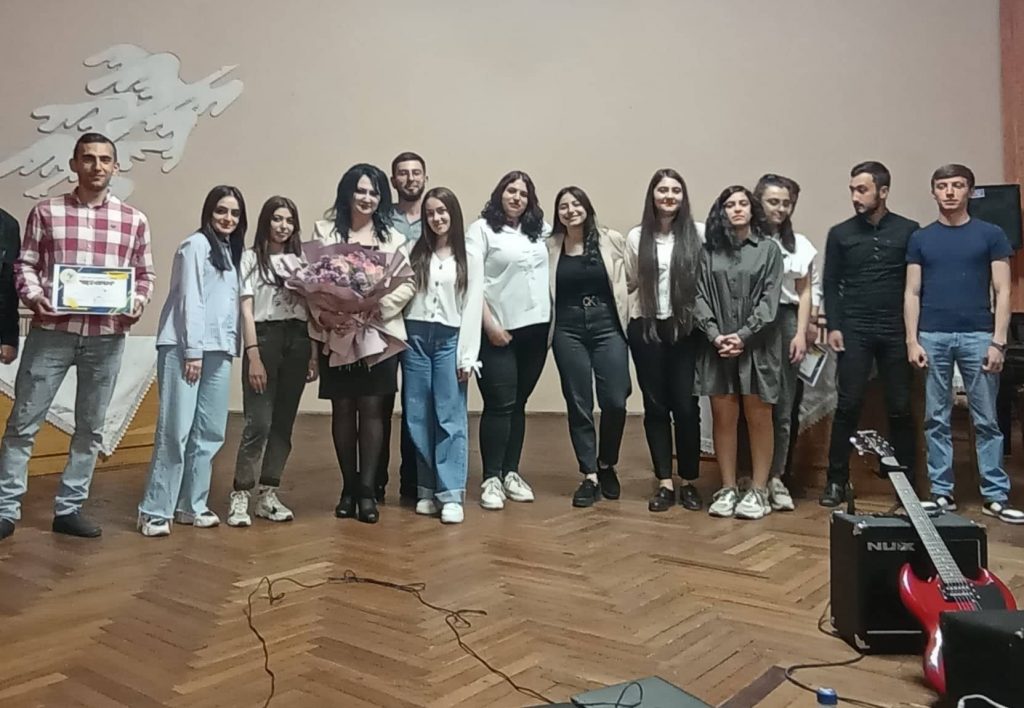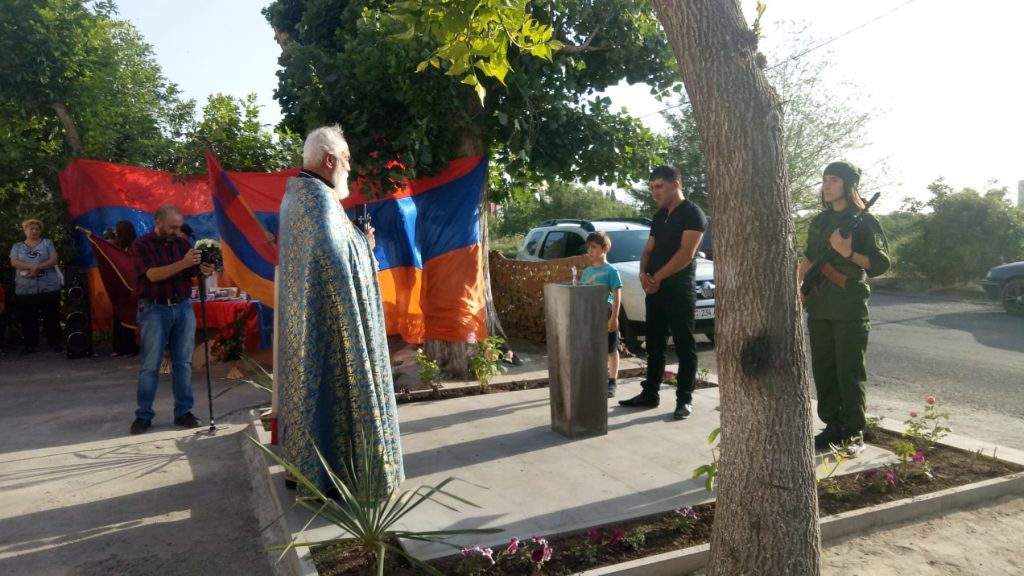Armenian Genocide
In April 1915 the Ottoman government embarked upon the systematic decimation of its civilian Armenian population. The persecutions continued with varying intensity until 1923 when the Ottoman Empire ceased to exist and was replaced by the Republic of Turkey. The Armenian population of the Ottoman state was reported at about two million in 1915. An estimated one million had perished by 1918, while hundreds of thousands had become homeless and stateless refugees. By 1923 virtually the entire Armenian population of Anatolian Turkey had disappeared.
What is the Armenian Genocide?
The atrocities committed against the Armenian people of the Ottoman Empire during W.W.I are called the Armenian Genocide. Genocide is the organized killing of a people for the express purpose of putting an end to their collective existence. Because of its scope, genocide requires central planning and a machinery to implement it. This makes genocide the quintessential state crime as only a government has the resources to carry out such a scheme of destruction. The Armenian Genocide was centrally planned and administered by the Turkish government against the entire Armenian population of the Ottoman Empire. It was carried out during W.W.I between the years 1915 and 1918. The Armenian people was subjected to deportation, expropriation, abduction, torture, massacre, and starvation. The great bulk of the Armenian population was forcibly removed from Armenia and Anatolia to Syria, where the vast majority was sent into the desert to die of thirst and hunger. Large numbers of Armenians were methodically massacred throughout the Ottoman Empire. Women and children were abducted and horribly abused. The entire wealth of the Armenian people was expropriated. After only a little more than a year of calm at the end of W.W.I, the atrocities were renewed between 1920 and 1923, and the remaining Armenians were subjected to further massacres and expulsions. In 1915, thirty-three years before UN Genocide Convention was adopted, the Armenian Genocide was condemned by the international community as a crime against humanity. [top]
The decision to carry out a genocide against the Armenian people was made by the political party in power in the Ottoman Empire. This was the Committee of Union and Progress (CUP) (or Ittihad ve Terakki Jemiyeti), popularly known as the Young Turks. Three figures from the CUP controlled the government; Mehmet Talaat, Minister of the Interior in 1915 and Grand Vizier (Prime Minister) in 1917; Ismail Enver, Minister of War; Ahmed Jemal, Minister of the Marine and Military Governor of Syria. This Young Turk triumvirate relied on other members of the CUP appointed to high government posts and assigned to military commands to carry out the Armenian Genocide. In addition to the Ministry of War and the Ministry of the Interior, the Young Turks also relied on a newly-created secret outfit which they manned with convicts and irregular troops, called the Special Organization (Teshkilati Mahsusa). Its primary function was the carrying out of the mass slaughter of the deported Armenians. In charge of the Special Organization was Behaeddin Shakir, a medical doctor. Moreover, ideologists such as Zia Gokalp propagandized through the media on behalf of the CUP by promoting Pan-Turanism, the creation of a new empire stretching from Anatolia into Central Asia whose population would be exclusively Turkic. These concepts justified and popularized the secret CUP plans to liquidate the Armenians of the Ottoman Empire. The Young Turk conspirators, other leading figures of the wartime Ottoman government, members of the CUP Central Committee, and many provincial administrators responsible for atrocities against the Armenians were indicted for their crimes at the end of the war. The main culprits evaded justice by fleeing the country. Even so, they were tried in absentia and found guilty of capital crimes. The massacres, expulsions, and further mistreatment of the Armenians between 1920 and 1923 were carried by the Turkish Nationalists, who represented a new political movement opposed to the Young Turks, but who shared a common ideology of ethnic exclusivity. [top]
It is estimated that one and a half million Armenians perished between 1915 and 1923. There were an estimated two million Armenians living in the Ottoman Empire on the eve of W.W.I. Well over a million were deported in 1915. Hundreds of thousands were butchered outright. Many others died of starvation, exhaustion, and epidemics which ravaged the concentration camps. Among the Armenians living along the periphery of the Ottoman Empire many at first escaped the fate of their countrymen in the central provinces of Turkey. Tens of thousands in the east fled to the Russian border to lead a precarious existence as refugees. The majority of the Armenians in Constantinople, the capital city, were spared deportation. In 1918, however, the Young Turk regime took the war into the Caucasus, where approximately 1,800,000 Armenians lived under Russian dominion. Ottoman forces advancing through East Armenia and Azerbaijan here too engaged in systematic massacres. The expulsions and massacres carried by the Nationalist Turks between 1920 and 1922 added tens of thousands of more victims. By 1923 the entire landmass of Asia Minor and historic West Armenia had been expunged of its Armenian population. The destruction of the Armenian communities in this part of the world was total. [top]
There were many witnesses to the Armenian Genocide. Although the Young Turk government took precautions and imposed restrictions on reporting and photographing, there were lots of foreigners in the Ottoman Empire who witnessed the deportations. Foremost among them were U.S. diplomatic representatives and American missionaries. They were first to send news to the outside world about the unfolding genocide. Some of their reports made headline news in the American and Western media. Also reporting on the atrocities committed against the Armenians were many German eyewitnesses. The Germans were allies of the Turks in W.W.I. Numerous German officers held important military assignments in the Ottoman Empire. Some among them condoned the Young Turk policy. Others confidentially reported to their superiors in Germany about the slaughter of the Armenian civilian population. Many Russians saw for themselves the devastation wreaked upon the Armenian communities when the Russian Army occupied parts of Anatolia. Many Arabs in Syria where most of the deportees were sent saw for themselves the appalling condition to which the Armenian survivors had been reduced. Lastly, many Turkish officials were witnesses as participants in the Armenian Genocide. A number of them gave testimony under oath during the post-war tribunals convened to try the Young Turk conspirators who organized the Armenian Genocide. [top]
The international community condemned the Armenian Genocide. In May 1915, Great Britain, France, and Russia advised the Young Turk leaders that they would be held personally responsible for this crime against humanity. There was a strong public outcry in the United States against the mistreatment of the Armenians. At the end of the war, the Allied victors demanded that the Ottoman government prosecute the Young Turks accused of wartime crimes. Relief efforts were also mounted to save “the starving Armenians.” The American, British, and German governments sponsored the preparation of reports on the atrocities and numerous accounts were published. On the other hand, despite the moral outrage of the international community, no strong actions were taken against the Ottoman Empire either to sanction its brutal policies or to salvage the Armenian people from the grip of extermination. Moreover, no steps were taken to require the postwar Turkish governments to make restitution to the Armenian people for their immense material and human losses. [top]
On the night of April 24, 1915, the Turkish government placed under arrest over 200 Armenian community leaders in Constantinople. Hundreds more were apprehended soon after. They were all sent to prison in the interior of Anatolia, where most were summarily executed. The Young Turk regime had long been planning the Armenian Genocide and reports of atrocities being committed against the Armenians in the eastern war zones had been filtering in during the first months of 1915. The Ministry of War had already acted on the government’s plan by disarming the Armenian recruits in the Ottoman Army, reducing them to labor battalions and working them under conditions equaling slavery. The incapacitation and methodic reduction of the Armenian male population, as well as the summary arrest and execution of the Armenian leadership marked the earliest stages of the Armenian Genocide. These acts were committed under the cover of a news blackout on account of the war and the government proceeded to implement its plans to liquidate the Armenian population with secrecy. Therefore, the Young Turks regime’s true intentions went undetected until the arrests of April 24. As the persons seized that night included the most prominent public figures of the Armenian community in the capital city of the Ottoman Empire, everyone was alerted about the dimensions of the policies being entertained and implemented by the Turkish government. Their death presaged the murder of an ancient civilization. April 24 is, therefore, commemorated as the date of the unfolding of the Armenian Genocide. [top]
The United Nations Convention on the Prevention and Punishment of the Crime of Genocide, describes genocide as “acts committed with intent to destroy, in whole or in part, a national, ethnical, racial or religious group.” Clearly this definition applies in the case of the atrocities committed against the Armenians. Because the U.N. Convention was adopted in 1948, thirty years after the Armenian Genocide, Armenians worldwide have sought from their respective governments formal acknowledgment of the crimes committed during W.W.I. Countries like France, Argentina, Greece, and Russia, where the survivors of the Armenian Genocide and their descendants live, have officially recognized the Armenian Genocide. However, as a matter of policy, the present-day Republic of Turkey adamantly denies that a genocide was committed against the Armenians during W.W.I. Moreover, Turkey dismisses the evidence about the atrocities as mere allegations and regularly obstructs efforts for acknowledgment. Affirming the truth about the Armenian Genocide, therefore, has become an issue of international significance. The recurrence of genocide in the twentieth century has made the reaffirmation of the historic acknowledgment of the criminal mistreatment of the Armenians by Turkey all the more a compelling obligation for the international community. [top]



